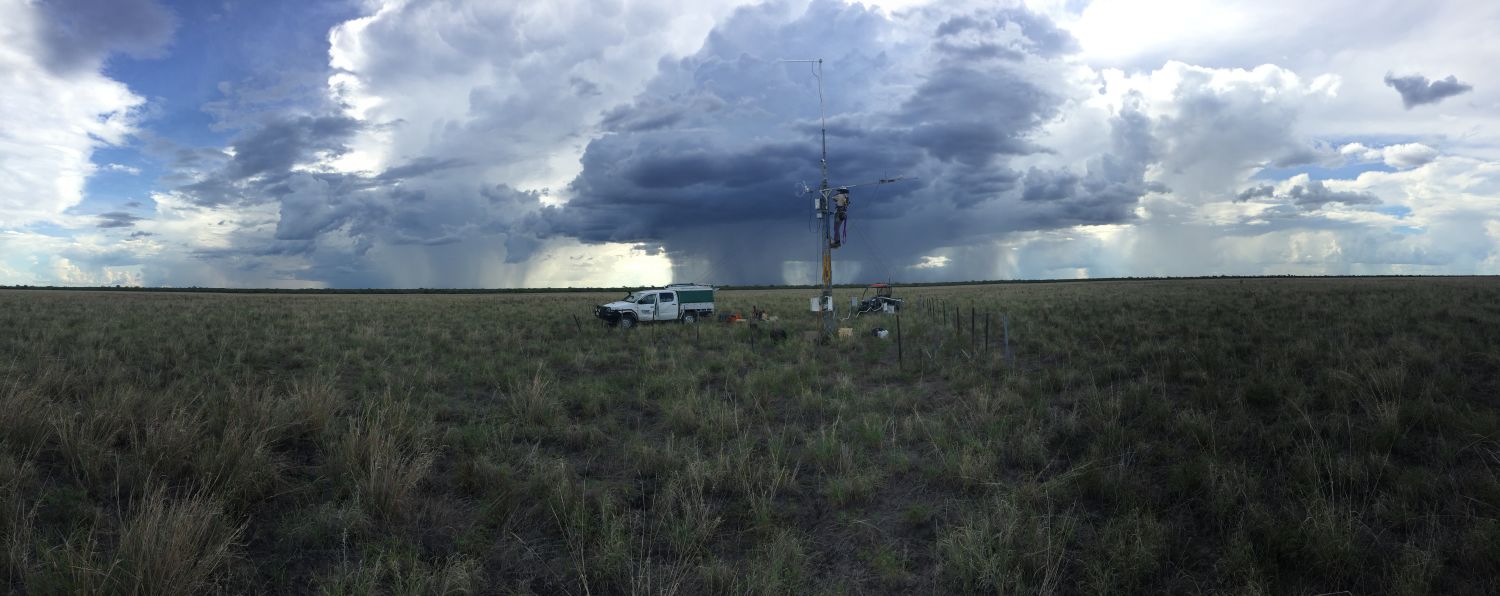2018 Australian Photo Contest Results
Bringing Campbell Scientific Down Under
The Campbell Scientific Australia team would like to thank to everyone who entered our first ever photo contest. The entries featured our gear in a diverse range of applications. In our 25 years of business in Australia, we are proud to have worked closely with each customer to design solutions rugged, reliable solutions providing invaluable observations to recommend change.
Winner - Matthew Northwood: Wet Season feildwork, Sturt Plains Flux Tower, NT Australia
Runner Up - Dean Sandwell: Soil-Climate Station, Ross Sea Region, Antartica
- Dale Worledge: Cosmic Ray Sensor & Automatic Weather Station, Mineral Banks Farm, Tasmania, Australia
- Dr Tony Wells: Soil Monitoring Sites, Hunter Valley, New South Wales, Australia
- Simon Leeds: Rainfall Monitoring Site, Mt Bartle Frere, Queensland, Australia
Winner

Matthew Northwood wins the 2018 Australian Photo Contest for this photo featuring the Sturt Plains flux tower that has seen fires and floods, lightning strikes, insect invasion and is still standing strong in the Northern Territory, Australia.
We are happy to announce the winning photo by Matthew Northwood from Charles Darwin University. On Newcastle Water Station, the Sturt Plains flux tower, pictured above, is one of the one of the five flux towers within the Northern Australia Tropical Transec (NATT). Charles Darwin University's Lindsay Hutley managed the project collaborating with the University of Western Australia's Jason Beringer.
Dominated by Mitchell grass the site is fast approaching a major milestone. In September of this year, the flux tower will make a decade of data collection.
It's not all been smooth sailing; there's been fires and floods, lightning strikes, subsidence and insect invasion. There has also been times when driving 800km (one way) to swap out an instrument seemed too daunting to contemplate. The major components on the site including Campbell Scientific sensors, loggers and ancillary equipment have been there through it all. Quality gear is a testament that it operates in conditions that humans can find difficult.
Late in the afternoon Charles Darwin University's Lindsay, seen in the photo, replacing an instrument at five metres high. With temperatures continuing to hover around a balmy 35°C and relative humidity of 37%, we were fortunate for the rain to miss us completely.
Sturt Plains is perhaps the perfect site for eddy covariance measurements due to its uniformity and its sets a magnificent back drop of a cloud burst, backlit by the setting sun in the west.
For more information about the sites:
Runner Up

Dean Sandwell is the runner-up for the 2018 Australian Photo Contest for his great photo featuring one of the few soil climate stations in Antarctica.
The Natural Resources Conservation Service of the United States Department of Agriculture (USDA) and The University of Waikato has established soil-climate stations in the Ross Sea Region to examine and research the thermal state of the active layer and the permafrost, which are key indicators of climate change within the cryosphere.
Using Campbell Scientific CR10X data loggers installed with sensors to record air temperature, relative humidity, solar radiation, and wind speed and direction. Installed at depths of 2cm-1.2cm are the Campbell 107 Thermistor temperature probes and Vite Moisture probes (Hydra Type A, Stevens Vitel).
For more detailed site summary refer to:
Honourable Mentions
We had so many great entries this year we found it hard to not feature them all. We would love to give honourable mentions to the following application photos:

Dale Worledge, CSIRO Land and Water featuring a Cosmic Ray Sensor, Campbell Scientific Automatic Weather Station and Logging Capacitance Probe on Mineral Banks farm in NE Tasmania as part of a catchment hydrology project (2012-2016).

Dr Tony Wells, University of Newcastle runs a network of two dozen soil monitoring sites in the upper Hunter Valley. On this visit to a station a hungry and curious horse assisted during a download whilst trying to eat his straw hat! (Photo by Associate Professor Greg Hancock.

Simon Leeds, Specialized Data Services rainfall monitoring site at the Eastern Summit of Mt Bartle Frere - Queensland's highest mountain at 1622m. Situated in Australia wettest tropics with annual rainfall totals regularly exceeding 3000mm at sea level, this site forms part of a flood forecasting system for Josephine Creek.
